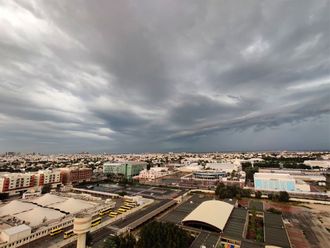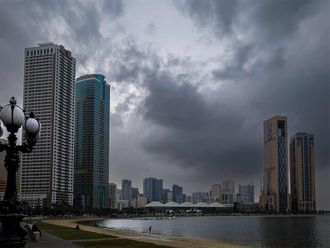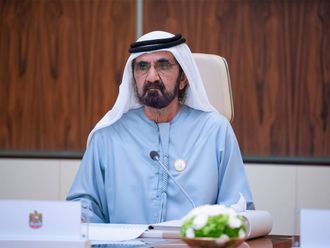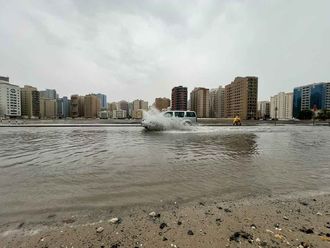
Dubai: Had it not been for the exhaustive efforts and cooperation of two great leaders, the shape of the UAE’s future would have been different than the one we know of today.
Sheikh Zayed Bin Sultan Al Nahyan and Sheikh Rashid Bin Saeed Al Maktoum became the founding fathers of the nation through sheer hard work and perseverance, as they remained committed to their vision to successfully join the seven emirates into one united front.
Emiratis fondly refer to Sheikh Zayed as Baba Zayed – Father of the Nation – for it was his ideology of peace, harmony, and tolerance that helped steer the formation of the union. Sheikh Zayed, who was born around 1918 into the Bani Yas family in the Jahili area of Al Ain, was known as a charitable and humble man, who put the country’s needs before all else. He believed that the country’s wealth from oil and gas should be devoted to building a prosperous and advanced country.
Sheikh Rashid is known as the founder of modern Dubai who transformed a modest Sheikhdom into a buzzing metropolis. Born in 1912, Sheikh Rashid grew up in the neighborhood of Al Shindagha and when he became Ruler of Dubai in 1958, took the city to new heights as his futuristic vision of the city encompassed construction of a port, a world trade centre, and the expansion of Dubai Creek, in addition to developing the city’s infrastructure with bridges, an airport and seaports.
The Trucial States
Prior to the formation of the United Arab Emirates, the country was known as the Trucial States that comprised of seven states, including Abu Dhabi, Dubai, Sharjah, Ajman, Fujairah, Umm Al Quwain, and Ras Al Khaimah.
Throughout the 19th century, the Gulf area was important to the British government for their strategic defence of India. So while the Trucial Sates did not belong to the British Empire, it received protection in turn for not selling any of its land to foreign governments.
This agreement was mutually accepted by both parties until the production of oil in Abu Dhabi in 1962, and later in Dubai and Sharjah, which placed the area in a prominent position in world economic and political affairs.
The rapid development and oil wealth prompted leaders with the desire to form a federation, which was fuelled even further in 1968, after the British government announced its intention to withdraw from the Gulf by the end of 1971.
Formation of the Union
Since his accession to power in 1966 as Ruler of Abu Dhabi, the late Sheikh Zayed had visualised a union between the Trucial States, and according to the UAE National Archives, had remarked, “In harmony and in some sort of federation, we could follow the example of other developing countries.”
The sudden announcement of the British Government to withdraw from the area left a political and military vacuum, which encouraged Sheikh Zayed to follow his vision of creating a more formal union between the emirates.
It was then on February 18, 1968 that history was created, when Sheikh Zayed and the late Sheikh Rashid met on the border between Dubai and Abu Dhabi. The leaders agreed to merge their respective emirates, and to jointly conduct foreign affairs, defense, security and social services and to adopt a common immigration policy.
This agreement eventually became known as the Union Accord and was the first move towards the establishment of a federation.
With the support of Sheikh Rashid, Sheikh Zayed embarked on a journey to gain support from the other five emirates, and also invited Bahrain and Qatar to join the union. For three years, Sheikh Zayed and Sheikh Rashid intensified their efforts to create a formal and solid union. After much deliberation, Qatar, Bahrain and the state of Ras Al Khaimah decided to remain autonomous.
On December 1, 1971, the British protectorate treaty expired – marking the end of one era that paved the way for an entirely new chapter.
On December 2, the next day, Sheikh Zayed was elected as the first President of Dawlat Al Emarat Al Arabiyya Al Muttahida (the United Arab Emirates) and Sheikh Rashid was Vice-President.
Ras Al Khaimah joined the UAE two months later on February 10, 1972.











